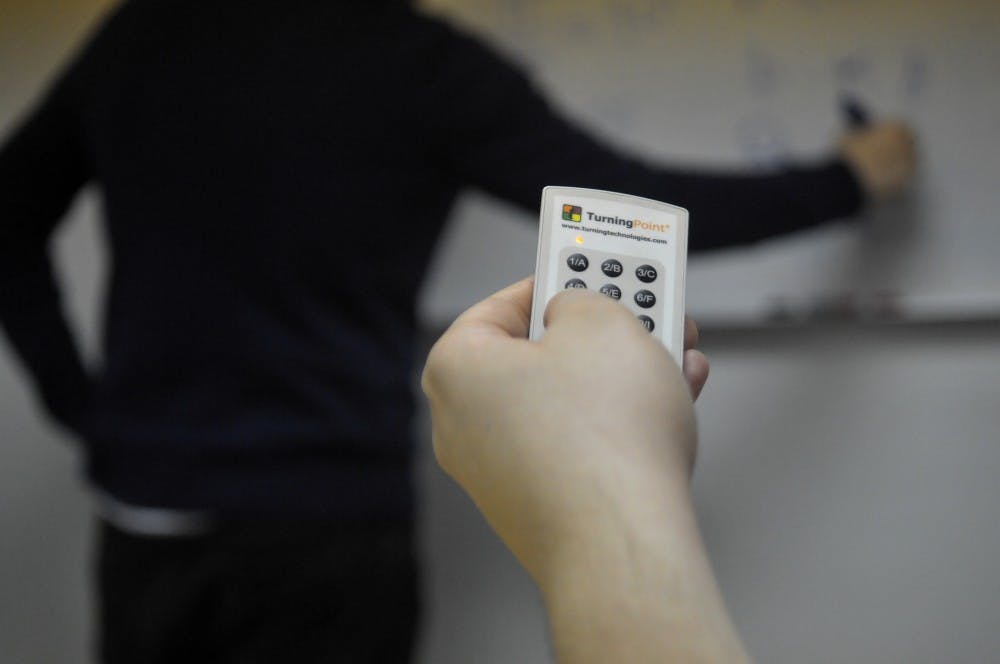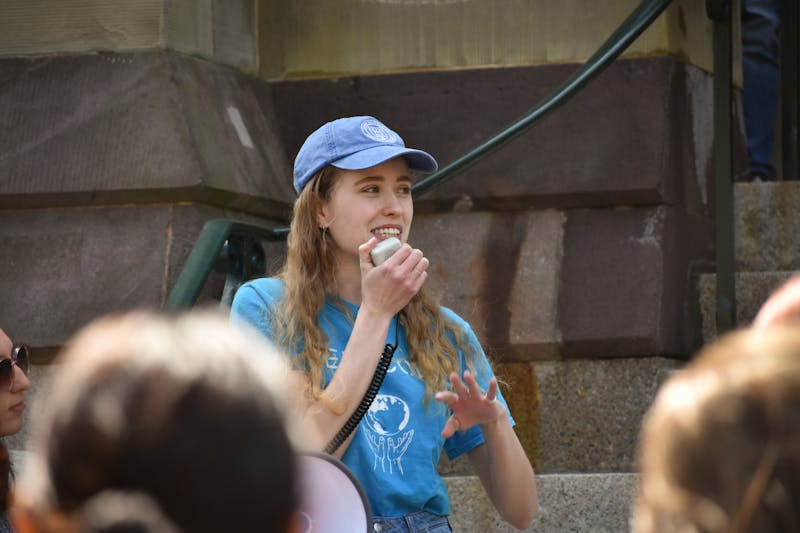
The standard shout of “here!” is slowly being replaced by the click of technology in some larger lecture halls.
A growing number of professors are using clickers — electronic polling devices that allow teachers to get real-time responses from entire classes — to track student attendance at lectures.
While using clickers to promote class participation is not new to Penn, some have debated whether it is academically sound to use the technology to enforce attendance policies.
“The main thing is that I needed some way to know who’s there and who’s not,” said Mathematics professor Nakia Rimmer, who used clickers to track attendance in all three of his lectures last semester. “It’s difficult to find this out in a large lecture hall, and it seemed a better alternative to sign-in sheets.”
Rimmer said that, for most of his courses, attendance recorded on students’ clickers is worth 3 percent of the final grade.
For Rimmer, the point of tracking attendance is not to police students, but rather to “give an early warning to the academic advising office” if a student is found to be missing large portions of class.
“If a student is missing large amounts of class, it probably means they haven’t been exposed to enough material to do well on the exams,” he said. “By finding out that they’ve been missing, I can reach out and help them before it’s too late.”
However, Rimmer acknowledged that several things can go wrong when using clickers as part of an attendance-tracking system in large lectures.
For example, some students may be present for the lecture without their clicker on hand, meaning that they will be marked absent.
In other cases, Wharton freshman Cameron Strong said, some students may give their clickers to friends to sign in for them instead of attending themselves.
“I think clickers are a great way to track participation in a large class setting, but I think a lot of people abuse the system,” Strong said.
On the other hand, there are some professors who use clickers not to track attendance, but only to encourage participation.
“As a college student, I wanted to be treated with the respect that I could make my own decisions, and could also miss some class but still do well in the course, and wanted to do this for my students,” Political Science professor Rogers Smith said. Smith uses clickers to gauge student opinion on case law in his Civil Rights and Civil Liberties course.
He said that clicker participation feedback provides him with general data on how many students are attending lecture, which then informs him if he is “doing as well as I should be doing in being engaging in lecture.”
“If I required attendance, I wouldn’t be getting this kind of feedback,” he said.
Students have offered mixed feelings to the use of clickers in lecture.
“I think that clickers are a really awesome way to keep students engaged in the class,” College sophomore Kelly-Ann Corrigan said. “It definitely prevented me from tuning out.”
Engineering freshman Jessie Mao disagrees. “College is not a place where you baby kids,” she said. “It’s their decision whether or not they want to show up.”
The Daily Pennsylvanian is an independent, student-run newspaper. Please consider making a donation to support the coverage that shapes the University. Your generosity ensures a future of strong journalism at Penn.
DonatePlease note All comments are eligible for publication in The Daily Pennsylvanian.







